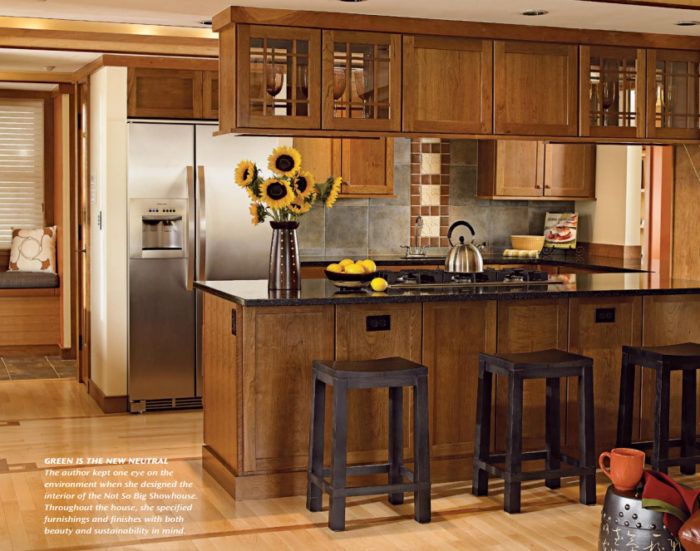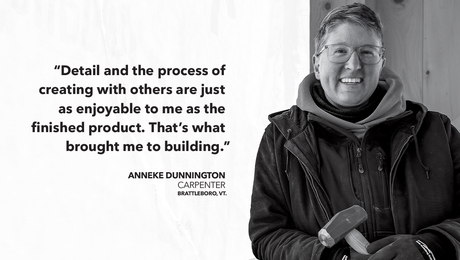12 Ways to Go Green
An interior designer's earth-friendly ideas go easily from Sarah Susanka's showhouse to your house.

Synopsis: Interior designer Pat Gaylor highlights eco-friendly options she chose when designing Sarah Susanka’s January 2005 Not So Big Showhouse in Orlando, Florida. Learn how any or all of these attainable options can help you make your home just a little bit greener.
Earlier this year, I had the pleasure of working with architect Sarah Susanka on her Not So Big Showhouse at the International Builders’ Show in Orlando, Fla. As an interior designer, I share Sarah’s appreciation for simple, timeless design, and we both place a premium on quality materials and sustainability.
Because thousands of people would visit the house, I knew the materials and furnishings we selected would have to be beautiful —and send the message that there are many environmentally responsible choices out there (some greener, some more practical, and some more affordable than others). I wanted to give people something to think about when they build, renovate, or redecorate.
When you specify products for a showhouse, you have free rein on the design side, but you’re often limited by the willingness of manufacturers to participate in the project. So keep in mind that the products you see here are just a few of the hundreds of green choices you can make everyday.
1. Hemp fabric
WHY – Hemp grows quickly, and no chemicals are used in its processing, from cultivation to finished product. I selected brown and natural-colored fabrics from Hemp Basics to cover pillows in the living room. The company carries an extensive line of dyed and natural hemp, all attractive, durable, and well priced.
Cost – $10 to $16 a yard.
OR TRY – Organic cotton, Tencel, or flax. Organic cotton is grown without pesticides; Tencel, made from cellulose fiber, is a by-product of wood; and flax, or linen, is made from the flax plant.
2. Hardwood flooring
WHY – Hardwood has always been a classic choice for beautiful and durable flooring, but is it an environmentally responsible choice? Yes, if the wood is certified by the Forest Stewardship Council, an organization that encourages responsible management of the world’s forests. I chose an engineered maple floor by Mirage with a decorative cherry border, a natural water-based stain, and a low-VOC finish.
COST – $7 to $15 or more per square foot, plus installation.
OR TRY – Ecotimber, which sells quality flooring from FSC-managed forests, as well as reclaimed wood and wood alternatives, like bamboo.
3. Marmoleum flooring
WHY – I chose Marmoleum for the laundry room because it’s a resilient floor covering made from natural ingredients—linseed oil, wood flour, resins, pigments, and jute. These components provide natural antibacterial properties that prevent microorganisms from multiplying, so Marmoleum is used widely in hospitals and other health-care facilities. It comes in endless color combinations and beautiful border designs, and in sheet form as well as tile squares.
COST – $4 to $6 a square foot, plus installation.
OR TRY – Cork flooring, which is attractive and comfortable underfoot. Cork is harvested every decade from the bark of the cork oak tree, a process that prolongs the life of the tree. A cork oak can live as long as 100 years.
For more photos and the remaining nine tips on green interior design, click the View PDF button below.

























